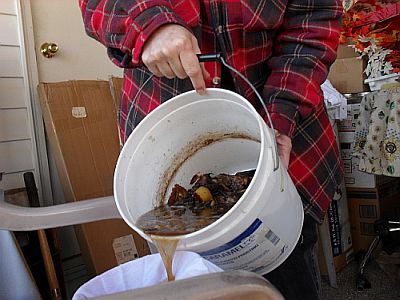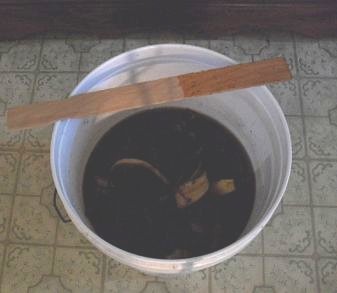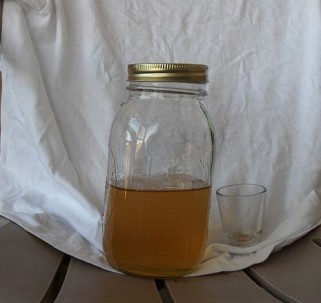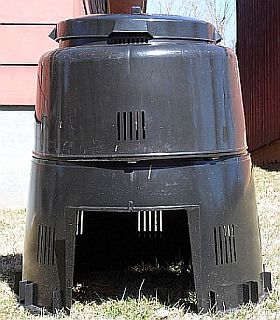
*Tea of a Different Kind*
I became interested in ‘compost tea’ when I first read about it a while back. Several websites have information on the process. Here is one –
http://www.doityourself.com/stry/how-to-make-compost-tea
I hadn’t gardened in several years, but did like to have houseplants around and I thought it would be an economical way to fertilize them. But, as usual, life happened and I didn’t get around to really experimenting with the concept until recently. So, daughter and I began tossing fruit, vegetable peelings as well as egg shells and any other kitchen scrap we thought would be suitable into a five gallon bucket. When the bucket was about half-full, we added water to the ‘garbage.’ We stirred the mixture once or twice daily with a new wooden paint stirrer. A paint stirrer that had been used would probably not be a good idea. When the bucket contents had been marinating a little over a week, we strained the liquid through an old cotton cloth. The liquid filled an empty plastic coffee can, about 33 ounces. This compost tea should be mixed with ten parts water to one part tea per the instructions we used. For the illustration I used ten one ounce shot glasses full of water to one shot glass of compost tea.

Pour compost tea 1

Raw material 1

Result 1
We intend to produce compost for our planned garden in two other ways. In January, when I went in to pay my water bill, I noticed a display of the large black plastic Earth Machine composting setup. The manufacturer is a Canadian company and according to their website they partner with municipalities to distribute the compost bin. Apparently my city had done so and I hadn’t heard about it. The picture is just to show it; I have not placed it in its permanent location.

We have also seen an interesting composting setup using wooden pallets, said to produce compost in three weeks. One pallet is laid on the ground, small boards are nailed on top so space between pallet boards is an inch or so to allow air but prevent material from falling through. Stand four pallet boards vertically around base, fastened together by cord, rope, plastic clothesline, etc. Two lengths of 1 or 2 inch plastic drain piping with holes drilled along their length are crisscrossed on the compost layers of grass clippings, etc., with ends sticking out through the pallets. The holes in the piping aerate the stack with no turning necessary and, as the compost compacts, the piping goes down with it. This is the theory and, according to the website, it works. Check it out - http://www.hillgardens.com/composting.htm #21-day. We will report how our experience turns out.
Penwoman
www.alpharubicon.com
All materials at this site not otherwise credited are Copyright © 1996 - 2010 Trip Williams. All rights reserved. May be reproduced for personal use only. Use of any material contained herein is subject to stated terms or written permission.